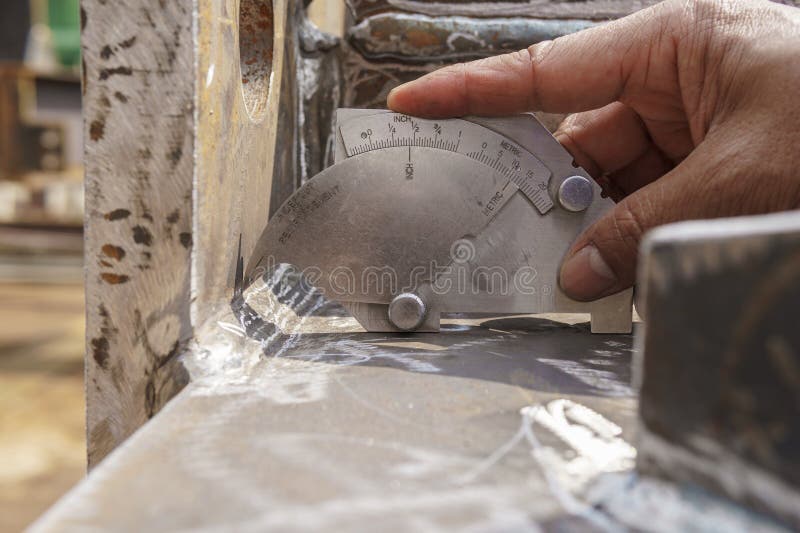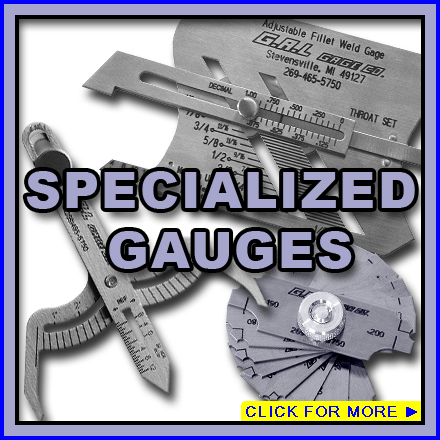Innovative Methods to Fillet Weld Inspection and Testing: Enhancing Weld Top Quality and Conformity Standards
In the realm of welding, the quality and integrity of fillet welds play a crucial duty in making certain the architectural sturdiness and dependability of numerous commercial parts. With the consistent drive for improved performance and compliance with rigid criteria, the exploration of ingenious methods to fillet weld inspection and testing has become vital.
Advanced Non-Destructive Testing Methods
Making use of cutting edge innovations, progressed non-destructive testing techniques play an important function in guaranteeing the honesty and quality of fillet welds. These methods, such as phased array ultrasonic testing (PAUT) and magnetic bit testing (MPT), offer in-depth insights into the weld's inner structure without causing any damages to the product. PAUT, for example, utilizes multiple ultrasonic elements to inspect the weld from numerous angles, offering an extensive visualization of prospective flaws like lack of blend or cracks.
Similarly, MPT works in detecting surface-breaking problems by using an electromagnetic field and iron particles to the weld location. This approach is particularly helpful for recognizing interruptions that may jeopardize the weld's stamina. By employing these advanced non-destructive testing techniques, weld assessors can precisely analyze the quality of fillet welds, making certain conformity with market requirements and guidelines. The capability to spot flaws at an early stage not only enhances weld high quality yet additionally stops expensive rework or failings in structural stability, underlining the significance of these innovative screening strategies in welding examinations.
Robotics and Automation in Evaluation

The assimilation of robotics and automation has transformed the evaluation procedure for fillet welds, improving performance and precision in high quality analysis. Robotics use accurate control and repeatability in checking welds, making sure consistent and trusted outcomes. Automated systems can be set to adhere to particular inspection courses, making sure complete protection of welds and minimizing the danger of human error.
Robot evaluation systems geared up with sophisticated sensing units can spot and measure weld attributes with high precision, offering detailed data for evaluation. These systems can determine defects such as splits, absence of blend, and porosity, allowing punctual restorative actions to be taken. Additionally, robotics and automation enable real-time information collection and analysis, providing instant feedback to operators and facilitating quick decision-making procedures.
Moreover, the use of robotics and automation in fillet weld inspection improves overall efficiency by reducing examination times and raising evaluation throughput. By improving the evaluation procedure, producers can make certain weld high quality and compliance requirements are fulfilled efficiently, eventually leading to set you back financial savings and boosted product high quality.
Utilizing Expert System for Analysis
Artificial knowledge plays a crucial role in boosting the effectiveness and precision of analysis in fillet weld examination processes. AI formulas can quickly refine vast amounts of data from weld assessments, spotting flaws or incongruities that might be challenging to determine with the nude eye.
Moreover, AI systems can pick up from previous my blog assessment data, constantly improving their ability to determine potential problems and variances in fillet welds. This adaptive knowing capability enhances the overall quality assurance process, minimizing the probability of human error and making sure that welds meet the required requirements. By integrating artificial intelligence into fillet weld analysis, industries can achieve greater levels of effectiveness, uniformity, and conformity in their examination techniques.
Portable Tools for On-Site Evaluation
Enhancing field evaluation performance, the adoption of mobile devices revolutionizes on-site assessment procedures for fillet welds. These tools use versatility and comfort, enabling assessors to carry out thorough assessments in various areas, consisting of remote or tough settings. Portable tools such as ultrasonic screening devices, magnetic bit assessment tools, and electronic radiography systems offer real-time data and high-resolution imaging abilities, enabling quick decision-making and prompt feedback on weld top quality.
One significant benefit of portable tools is their capability to enhance examination procedures, reducing downtime and enhancing general productivity - Gauge Fillet Weld. Examiners can quickly transfer these devices to various work sites, getting rid of the demand for transferring hefty equipment or parts to off-site centers. In addition, the transportability of these tools promotes cost-effectiveness by minimizing transportation costs and speeding up examination timelines
Furthermore, making use of portable devices for on-site evaluation promotes aggressive quality assurance actions, as assessors can promptly determine and address any possible welding problems or disparities. By integrating these ingenious innovations right into on-site inspection techniques, welding specialists can make certain compliance with sector standards and enhance weld top quality, eventually resulting in enhanced structural integrity and security in different welding applications.
Integration of Data Administration Equipment

Having actually enhanced on-site inspection processes through the utilization of mobile devices, the next stage involves the smooth assimilation of information monitoring systems to better improve effectiveness and data evaluation capabilities in fillet weld published here examination and screening. By incorporating data administration systems into the assessment process, companies can enhance data collection, storage, and analysis. This integration enables real-time monitoring of weld high quality, prompt recognition of problems, and timely decision-making to correct any issues that may arise during the examination process.
Data administration systems play a crucial function in centralizing inspection information, helping with easy gain access to for licensed employees, and guaranteeing data stability and protection. With the combination of these systems, inspectors can generate thorough reports, track historic information for pattern analysis, and enhance overall process performance. Additionally, the assimilation of information monitoring systems allows seamless interaction in between various stakeholders involved in the examination procedure, promoting cooperation and improving general quality control procedures. Eventually, the assimilation of information management systems serves to elevate the standards of fillet weld assessment and screening, guaranteeing Website compliance with market guidelines and improving weld high quality.
Verdict
To conclude, innovative approaches to fillet weld evaluation and screening have actually considerably boosted weld quality and conformity criteria. Advanced non-destructive testing techniques, robotics, automation, man-made intelligence, mobile tools, and information monitoring systems have actually changed the means weld evaluations are carried out. By utilizing these modern technologies, sectors can guarantee that welds meet the required high quality requirements and policies, inevitably enhancing total effectiveness and safety and security in welding procedures.

Having enhanced on-site examination processes via the use of mobile tools, the following phase involves the smooth integration of data administration systems to even more improve performance and information analysis capabilities in fillet weld inspection and testing. Inevitably, the integration of information monitoring systems serves to raise the standards of fillet weld examination and screening, making sure compliance with industry policies and enhancing weld top quality.
